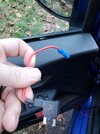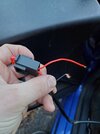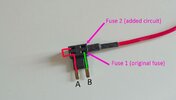Mpa1991
New Member
Hi,
Absolute novice here, sorry if this question seems dumb but I'm confused. Almost done installing heated seats (i know this site is about dash cams but i saw posts about the add a fuse here so thought maybe you could still help) in my wife's car, just need to plug in to the fuse box. Every tutorial either glosses over the wiring or only discusses the hot wire going into the add a fuse. There are two wires coming from my device and I'm unsure how to wire this up. I already know which spots in the fuse box are only on when the car is on, which side of the fuse is the hot side, but no idea how the wiring works. Thanks in advance to anyone who can help my inept self.

Absolute novice here, sorry if this question seems dumb but I'm confused. Almost done installing heated seats (i know this site is about dash cams but i saw posts about the add a fuse here so thought maybe you could still help) in my wife's car, just need to plug in to the fuse box. Every tutorial either glosses over the wiring or only discusses the hot wire going into the add a fuse. There are two wires coming from my device and I'm unsure how to wire this up. I already know which spots in the fuse box are only on when the car is on, which side of the fuse is the hot side, but no idea how the wiring works. Thanks in advance to anyone who can help my inept self.



